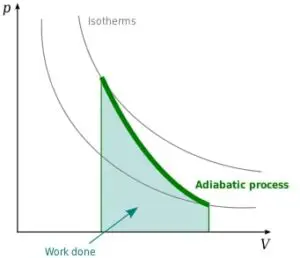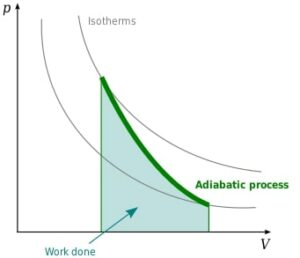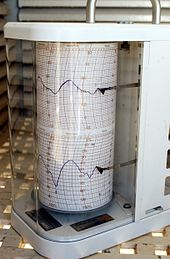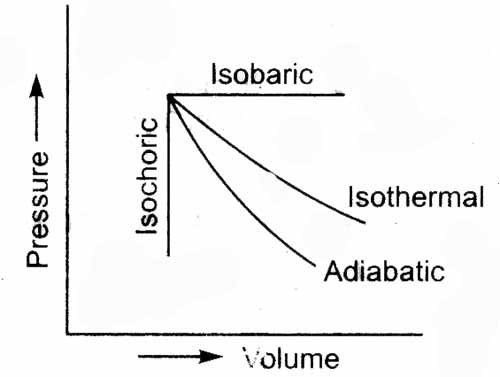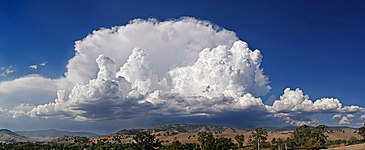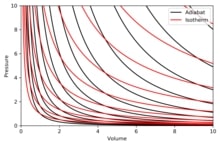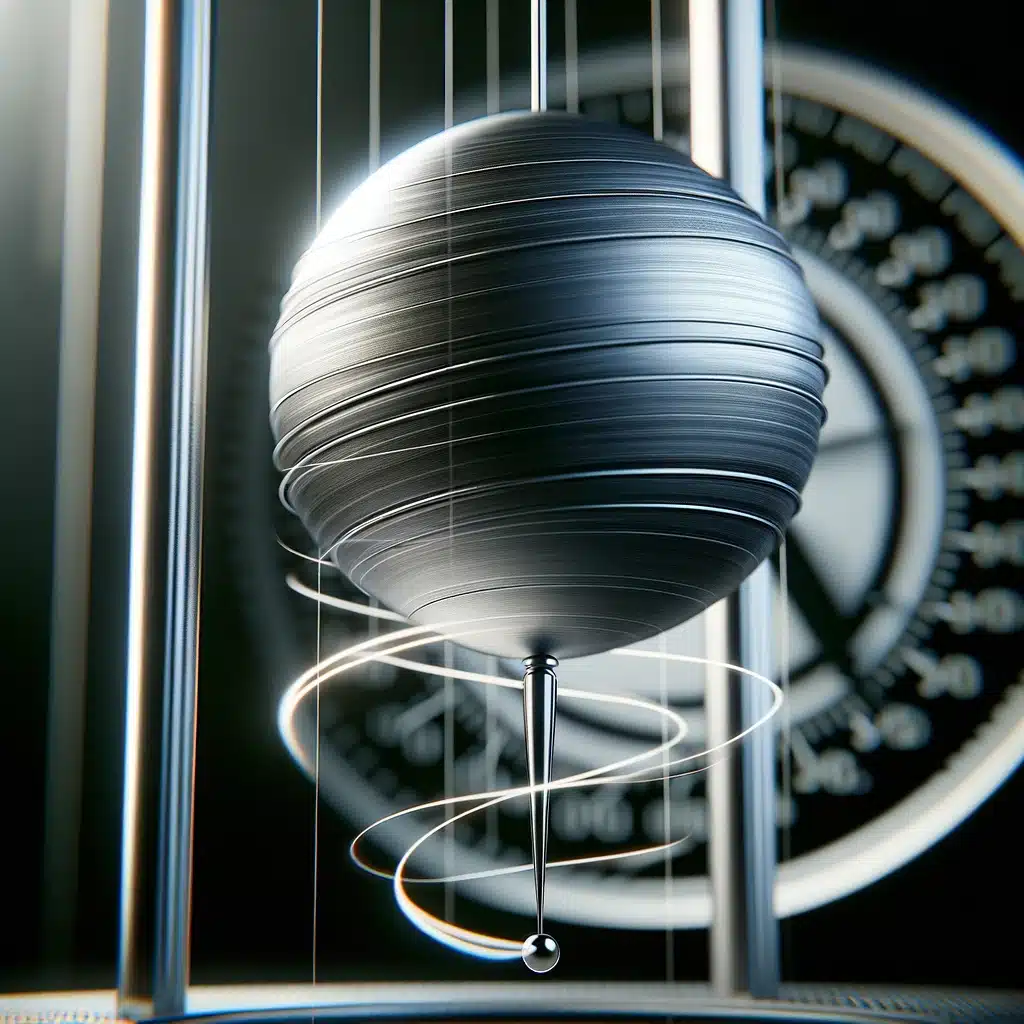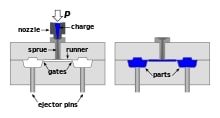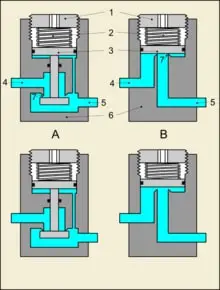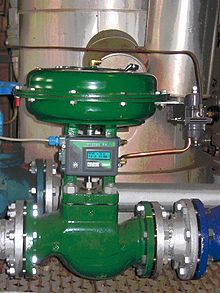Stress and strain are key mechanical properties affecting how materials change under force. Stress is the force per unit area applied to a material, strain is the resulting deformation. These two concepts are closely linked.
When a force is applied, stress occurs. It’s proportional to deformation and can be calculated using Hooke’s law – stress is directly proportional to strain within the elastic limit of the material. This is shown graphically as a stress-strain curve.
Strain is the relative change in size or shape of an object due to stress. It’s a dimensionless quantity and can be expressed in terms of axial, shear, or volumetric strain. Axial strain is elongation or compression, shear is when layers slide past each other, and volumetric change in volume.
Every material has its own mechanical properties determining how it responds to stress and strain. This includes the modulus of elasticity, yield strength, and ultimate tensile strength.
What is stress?
Stress is the amount of load experienced by the material per unit cross sectional area. To find the magnitude to stress, we need the magnitude of force and the cross sectional area of the material on which stress is applied.
Stress is of many types- Normal stress, shear stress and volumetric stress. We will discuss about types of stresses in further section of this article.
What is strain?
Strain is the ratio of change in length to the original length of the work piece. The change in length occurs as a result of stress applied to the work piece.
Strain shows the amount of change in dimensions of the material in terms of percentage. Mathematically, strain can be given as-
where,
epsilon is the strain
l is the original length of work piece
Shear strain vs shear stress
Stress and strain are two different concepts in material science. Stress is the force per unit area applied to an object, while a strain is the deformation caused by stress. In other words, stress is how much force is being applied and strain is how the object responds to that force.
To better understand the difference between stress and strain, take a look at this table:
| Stress | Strain | |
| Definition | Force per unit area applied to an object. | Deformation experienced by an object due to stress. |
| Measurement | Pressure or force per unit area. | Elongation, compression, or torsion tests. |
| Types | Tensile stress, compressive stress, shear stress, etc. | Tensile strain, compressive strain, shear strain, etc. |
| Effect | Causes structural failure or deformation in materials. | Shows how well a material can handle external loads. |
It’s important to note that stress can be either positive (tension) or negative (compression). The same holds true for strain, which can have positive (elongation) or negative (contraction) values.
To really understand stress and strain, you need to know their relationship and how they impact different materials. To learn more, read our comprehensive material science and engineering articles. Discover the powerful forces that shape our world!
Relationship Between Stress and Strain
Stress and strain are key concepts in materials science and engineering. Stress is the force applied to a material, while a strain is the deformation or change in shape that results. To understand how stress and strain work together, let us consider a metal rod as an example. When a force is applied, it experiences stress which then causes the rod to deform, resulting in strain. This relationship is quantified by Young’s modulus, the ratio of stress to strain, also known as the modulus of elasticity.
By measuring the amount of stress and strain, engineers can determine the material’s Young’s modulus. This knowledge is significant for constructing structures that can bear loads without deforming.
Furthermore, understanding stress and strain allows us to analyze material behavior beyond the elastic limit. Excessive stress or deformation can cause plastic behavior or fracture. By examining how stresses and strains form under different conditions, researchers can gain insight into failure mechanisms and enhance material performance.
Don’t miss out on grasping this fundamental concept – it is vital for many engineering applications. So whether you’re designing buildings or creating advanced materials for aerospace, a good grasp of stress and strain is essential. Start exploring this exciting field now and uncover the secrets of the relationship between stress and strain!
Types of Stress
To understand the different types of stress, let’s delve into the world of mechanical properties. In order to distinguish between stress and strain, we need to explore their definitions and characteristics. Within this section, we will focus on three key sub-sections: tensile stress, compressive stress, and shear stress. Each one plays a unique role in determining the behavior of materials under different loading conditions.
Tensile Stress
Tensile stress is a pulling force that can cause a material to stretch or elongate. It is commonly seen in structures such as bridges and buildings, and everyday items like ropes and cables.
The elastic limit of a material indicates the maximum amount of stress it can withstand without permanent deformation. Tensile strength, on the other hand, is the maximum stress the material can handle before breaking.
For example, steel can take up to 250MPa of stress before deforming, and up to 400MPa of stress before breaking. Aluminum has an elastic limit of 100MPa and a tensile strength of 200MPa. Nylon, meanwhile, can take up to 60MPa of stress without deforming, and 80MPa of stress before breaking.
In a distant mountain village, a bridge of steel stood tall. Despite its exposure to heavy loads and extreme weather conditions, it persevered. One stormy night, a massive tree fell onto the bridge, creating a strong pulling force. However, the bridge did not break. It stretched and flexed under tension, showcasing the remarkable strength of tensile stress. This enabled it to endure, providing safe passage for all who relied on it.
Even rocks know the struggle of compressive stress; it’s like being squeezed into a tight pair of jeans but without the option of unbuttoning them.
Compressive Stress
Compressive Stress has some interesting facts. Check out the table below for key info:
| Material | Strength | Capacity | Durability |
| Steel | 250 MPa | 500 GPa | 30 yrs |
| Concrete | 25 MPa | 20 GPa | 50 yrs |
| Wood | 7 MPa | 12 GPa | 100 yrs |
The table shows that different materials have different levels of strength, capacity, and durability when exposed to compressive stress. Steel has the highest strength capacity of 250 MPa, concrete has 25 MPa and wood has 7 MPa. The elastic modulus or Young’s modulus measures a material’s ability to resist compression. Steel is the strongest in this regard.
Compressive stress can have real-life impacts. For example, a bridge with concrete columns may suffer from compressive stress due to heavy loads and environmental conditions. This can cause cracks and weaken the structure. This case highlights the importance of understanding compressive stress and its effects on materials.
Shear Stress
Let’s delve into the concept of shear stress. It’s the ratio of shear force to cross-sectional area and measured in Pascal (Pa). Shear stress is used in many fields, such as civil engineering, material science, and fluid dynamics. To give a real-world example, it can be seen when you slide one layer of playing cards over another layer with force applied parallel to the surface.
Shear stress is significant. It affects materials’ strength and stability. Plus, it alters deformation and failure mechanisms. Thus, it is a key factor in engineering designs.
To ensure optimum performance and safety, here are some tips to mitigate shear stress issues:
- Choose materials with high shear strength.
- Reinforce materials with fibers or bars.
- Use appropriate geometries and load distribution techniques.
- Do regular inspections to detect excessive shear stress.
Follow these suggestions and engineers can effectively manage shear stress. Moreover, they can guarantee structure and components’ longevity. Understanding shear stress is important in various engineering disciplines. It enables optimal design and functionality.
Types of Strain
To understand types of strain – longitudinal, shear, and volumetric strain – we explore how materials deform under different loading conditions.
A longitudinal strain occurs when an object elongates or compresses along the direction of the applied force. Shear strain denotes the deformation resulting from forces acting parallel but in opposite directions. Volumetric strain describes changes in the material’s volume due to applied forces. These distinct forms of strain provide insights into the mechanical properties of materials.
Longitudinal Strain
Take a peek at this table to have a better grasp of Longitudinal Strain:
| Material | Strain |
| Steel | 0.002 |
| Aluminum | 0.0035 |
| Wood | 0.0015 |
| Concrete | 0.0012 |
Each material has a special ability to oppose deformation under exerted forces. Note that the figures are only examples and may change due to various elements such as type of material, composition, and environment.
Longitudinal strain comprehension is important in engineering and construction since it helps engineers understand the behavior of materials when under pressure. Having this information enables them to build structures that can survive expected forces and avoid structural disasters.
Do you want to pursue a career in engineering or construction? Knowing longitudinal strain and its effects can help you become successful in these industries and help make safer construction projects. Don’t miss this opportunity!
Shear strain: For those who love a good twist, this strain will surprise you and leave you wondering if everything is still intact.
Shear Strain
Shear strain is a type of deformation in materials when two forces act in opposite directions. It’s an important concept in mechanics and materials science. Let’s get a better understanding with an example. We have an initial length of 100 cm and a change in length of 5 cm. Divide the change in length by the initial length to get the shear strain (∆L/L).
It’s worth noting that the shape and size of the material don’t affect shear strain. It only depends on the forces applied and the displacement between layers. When calculating shear strain, make sure to use accurate measurements and consider any external factors that may affect the material.
Pro Tip: When it comes to volumetric strain, expanding your horizons is actually a good thing – unless, of course, you’re a balloon and someone hands you a sharp object.
Volumetric Strain
Volumetric strain is when the volume of material changes under stress. It’s a way of measuring how much an object’s shape and size have changed due to external forces. It’s a key concept in materials engineering and is used to analyze material behavior in different conditions.
To understand volumetric strain, let’s look at the table below:
| Property | Description |
| Formula | Change in vol./original vol. |
| Unit | Unitless |
| Calculation Ex. | If the original vol. is 10 cm³ and the change is 2 cm³, then vol. strain = (2/10) = 0.2 |
| Significance | Helps engineers determine material behavior and potential weaknesses |
Volumetric strain shows how a material responds to different types and magnitudes of stress. So, engineers can choose materials wisely, design strong structures, and foresee potential failures.
Reminder: When calculating volumetric strain, it’s crucial to use precise measurements for the original volume and the change in volume. Tiny measurement errors can affect the accuracy of your results.
Stress-Strain Curve
Stress-strain curve
Image Credit-Nicoguaro, Stress strain ductile, CC BY 4.0
To understand the stress-strain curve with its sub-sections, let’s dive into each phase briefly. Beginning with the elastic region, we’ll explore its behavior within the proportional limit. Moving on, we’ll discuss the elastic limit and the significance of the yield point. Then, we’ll examine the characteristics and behavior of the plastic region. Finally, we’ll touch upon the concept of ultimate tensile strength.
Elastic Region
Welcome to the wild world of the Elastic Region! Here, materials can be put under stress and strain, but still return to their original shape when the load is gone. This region follows Hooke’s Law, which states that stress is proportional to strain – and it shows in the stress-strain curve as a straight line with a positive slope.
We measure the stiffness of a material in this region with the modulus of elasticity or Young’s modulus. At a molecular level, this phase is reversible – atoms move apart when a force is applied, and when it’s removed, they shift back to their original positions.
To get a better handle on this concept, let’s take a look at this Table:
| Property | Description |
| Stress | Proportional to the applied load |
| Strain | Proportional to deformation strain |
| Modulus of Elasticity | Measures stiffness |
| Yield Point | Limit at which permanent deformation begins |
This table helps us understand the properties of the Elastic Region – such as stress, strain, and modulus of elasticity.
The history of this phenomenon dates back to 1678 when Robert Hooke conducted experiments on spring mechanics. His findings proved how a spring exhibits proportional deformations within its elastic limits.
To wrap up, materials in the Elastic Region behave elastically according to Hooke’s Law. This knowledge helps us predict material behavior and design structures with enough flexibility and stability.
Proportional Limit
The point where a material stops behaving linearly and starts deforming plastically is known as the proportional limit. At this stage, the stress put on the material is proportional to its strain.
Here is what is seen at the proportional limit:
| Property | Definition |
| Stress | The force per unit area felt by the material |
| Strain | The measure of deformation experienced by the material |
| Elasticity | The material’s ability to go back to its original shape after deformation |
| Plasticity | The permanent deformation the material experiences when subjected to stresses beyond its elastic limit |
Also, materials that are within their elastic limit can go back to their original shape when the stress is removed. But, going beyond this point results in permanent deformations and possibly irreversible damage.
So, understanding and calculating the proportional limit of a material is essential in designing structures and making sure they can withstand external forces without surpassing their capacity. Ignoring this could result in disastrous failures or dangerous working conditions.
To learn more about how materials behave in different scenarios, further analysis and testing are necessary. Learn more about stress-strain curves and gain knowledge on how materials respond to different conditions. Take advantage of uncovering their incredible characteristics!
Elastic Limit
The Elastic Limit is the maximum amount a material can bend before it changes permanently. To show this, here’s a table with materials and their limits:
| Material | Elastic Limit (MPa) |
| Steel | 250 |
| Alum. | 150 |
| Rubber | 5 |
When a material is stressed beyond its Elastic Limit, it goes through a phase called plastic deformation. In this phase, the material can’t return to its original shape after the stress is relieved.
Different materials have different Limits due to their properties and atomic structures. Metals have higher Limits than more flexible materials like rubber.
Tip: Engineers and designers must understand and design within a material’s Elastic Limit, to prevent structural failures and ensure safe performance.
Yield Point
Stress-strain curves feature an important point: the yield point. This is where a material starts to deform plastically under stress, instead of returning to its original shape once the stress is removed. Let’s take a look at the yield point’s significance with a table.
| Material | Yield Strength (MPa) |
| Steel | 250 |
| Aluminum | 150 |
| Titanium | 900 |
As the table shows, different materials have different yield strengths. Steel has a higher yield strength than aluminum and titanium. This means steel can handle more stress before permanently deforming.
The yield point is a big transition in material behavior. Before it, materials usually just have elastic deformation. This means they return to their original shape after the stress is gone. Past the yield point, materials start to have plastic deformation, where the shape changes even when stress is no longer there.
To make sure structures are safe and do their job, it’s important to consider the yield point. Here are some tips to help:
- Know Yield Strength: Learn about yield strengths and how they correspond to the intended use. This helps select materials and design structures.
- Safety Margins: When designing, think about potential stresses beyond the expected limit. This can stop unforeseen deformations or failures.
- Material Testing: Test materials under conditions like what they will experience. This helps determine exact yield points and make sure applications work.
Following these tips helps engineers and designers use yield points to create strong structures that can handle expected stress levels and stay safe. If stress were a superhero, the plastic region would be its alter ego, a flexible and slightly twisted version that likes to push boundaries just for fun!
Plastic Region
The plastic region of a stress-strain curve is the stage where materials undergo permanent deformation after their yield point. Properties like ductility and strain hardening in this region are key for various industries.
Ductility is the ability to deform plastically without breaking. Strain hardening is when a material becomes stronger as it is deformed.
Analyzing the plastic region of stress-strain curves is valuable for engineers. It helps them design structures that can withstand stress and strain.
Uncover how materials behave in the plastic region! Discover new possibilities in design and innovation. Find out how materials reach their breaking point – just like your will to live after a stressful day.
Ultimate Tensile Strength
Know the ultimate tensile strength of materials? It’s essential for engineering design and structural analysis. What is it? It’s the maximum stress endured by a material before it breaks when tested in a tensile testing machine. This test adheres to standards such as ASTM A370.
Need a break from stress? Bend over backward and let the Modulus of Elasticity prove that materials have limits. Unlike your sanity…which has no limits!
Modulus of Elasticity
To understand the concept of modulus of elasticity, let’s explore the relationship between stress and strain in the elastic region. We’ll start by defining the modulus of elasticity, which is a crucial mechanical property that describes a material’s ability to deform under stress. This sub-section will shed light on how stress and strain behave in the elastic region, providing insights into the material’s response to external forces.
Definition of Modulus of Elasticity
Modulus of elasticity is a measure of a material’s ability to stretch or compress when a force is applied. It is the ratio of stress to strain in the elastic region and is used to predict how materials will act under different conditions. It is also the slope of a stress-strain curve during the linear elastic deformation phase. Materials with high modulus values are rigid and less likely to deform, while those with low modulus values are more flexible.
Thomas Young, an English polymath, introduced this concept in the early 19th century. He observed the behavior of different materials under tension and compression, discovering that each has its own stiffness or elasticity.
Bridge engineering is an example of where understanding the modulus of elasticity is important. Engineers must consider load distribution and structural integrity when designing a bridge. By selecting appropriate materials with suitable moduli of elasticity, they can prevent excessive deflection or collapse.
Relationship Between Stress and Strain in Elastic Region
In materials science, understanding stress and strain in the elastic region is key. Let’s explore this connection! Visualize it with a table:
| Stress (in Pascals) | Strain (unitless) |
| Increase in stress = proportional increase in strain. |
This linear relationship displays a material’s elasticity within its limit of proportionality.
Note that this correlation applies only to linearly elastic materials. These deform reversibly when force stays within limits. Use these insights when assessing a material’s elasticity for structures, mechanical components, and other applications.
Remember, stress-strain behavior can vary across different materials and situations. Consider this when evaluating their viability. Mechanical Properties of Materials: Like a bad relationship, materials can have a breaking point – the modulus of elasticity, the drama queen of science.
Mechanical Properties of Materials
To understand the mechanical properties of materials, let’s dive into the section “Mechanical Properties of Materials” and explore the sub-sections: Yield Strength, Ductility, Hardness, Elasticity, and Plasticity. These sub-sections will offer insights into the various characteristics and behaviors of materials, shedding light on their resilience, flexibility, and ability to undergo deformation or retain their shape under external forces.
Yield Strength
Many factors can affect the yield strength of a material – composition, production process, and temperature. To help us understand, let’s look at a table:
| Material | Yield Strength (MPa) |
| Steel | 250 |
| Aluminum | 150 |
| Titanium | 900 |
| Copper | 200 |
It’s clear from the table that Titanium has the highest yield strength of 900 MPa, while Aluminum is lower at 150 MPa. This allows engineers to pick materials based on their strength and durability needs.
To increase yield strength, we can consider:
- Alloying: Adding elements to the metal can create solid solution strengthening or precipitation hardening, increasing yield strength.
- Cold Working: Applying plastic deformation to the material at low temperatures can cause dislocation movement and grain refinement, leading to higher yield strength.
- Heat Treatment: Controlling heating and cooling processes can change the microstructure, offering potential to raise yield strength through phase transformation.
Working these suggestions into material selection and production processes will help boost engineering performance and reliability.
Ductility
Ductile materials, such as copper and aluminum, show huge plastic deformation when under tension. They can be drawn into thin wires or rolled into sheets without breaking. Therefore, these materials have great malleability. This enables the production of intricate components in industries like aerospace and automotive.
The ductility of materials is also key for their structural integrity. Ductile elements can absorb energy before failure, making them great for applications that need resilience. Steel, for example, has great ductility, meaning that structures can handle sudden impacts/loads.
To make sure materials have adequate ductility, here are some tips:
- Reduce impurities: Impurities can hinder plastic deformation, so eliminating them increases ductility.
- Grain refinement: Smaller grain sizes allow for uniform deformation and restrict dislocation movement, thereby increasing ductility.
- Temperature control: Heat helps atoms move more freely in the lattice structure, thus improving plastic deformation.
These suggestions work by improving the structure and composition of materials. If impurities and grain size are minimized, the risk of crack initiation is reduced and ductility levels increase. Temperature control ensures better atom mobility within the lattice structure, which promotes plastic deformation without fracture.
Hardness
Let’s take a look at the hardness of different materials. Steel has a hardness of 120-600, aluminum 15-120, copper 30-250, glass 400-800, and diamond has an impressive 7000 on the Brinell scale.
Johan August Brinell, a Swedish engineer, developed a method to measure hardness in the early 1800s. His technique included pressing a steel ball into a metal surface and measuring the indentation. This began the standardization of hardness testing and opened up new possibilities in material science.
Remember, materials with great elasticity can be like running into an ex at the grocery store – they have the ability to snap back at you!
Elasticity
A table displaying materials and their elastic moduli shows us how elasticity works. This modulus tells us how much a material can bend under pressure, then return to its original shape. Here are some examples:
| Material | Elastic Modulus (GPa) |
| Steel | 200 |
| Aluminum | 70 |
| Rubber | 0.01 |
Viscoelasticity is an elasticity that can be seen in fluids like honey or molasses.
Robert Hooke, an English scientist from the 17th century, has helped us understand elasticity better. His law, known as Hooke’s Law, tells us that a force is directly proportional to the displacement of a spring when it’s being stretched or compressed. This law has helped make many engineering and tech advances.
Note: Plasticity is not about how easily your credit card bends, it’s about a material’s ability to deform without breaking.
Plasticity
Let’s take a deeper look at plasticity. We can see from the table above that stress and strain have nonlinear behavior in polymeric materials, meaning they don’t follow simple equations.
Moreover, temperature, strain rate, and other environmental factors can influence plastic deformation. For instance, some metals become more plastic when heated due to thermal activation processes.
To make materials more pliable, engineers use alloying elements or additives to modify the microstructure and promote dislocation movement. Heat treatment like annealing can also relieve internal stresses and increase ductility.
The Stress-Strain curve is useful for understanding our breaking point and how to be most efficient. It helps us both in engineering and in life.
Shear stress vs shear strain graph
The graph showing the relationship between shear stress and shear strain is called as the shear stress- shear strain curve or shear stress vs shear strain graph.
The graph is shown below-

Image credits: Nicoguaro, Stress strain ductile, CC BY 4.0
Here we can see different regions where the curve changes it slope.
- Region 1 (Up to yield strength)– This is region is the proportionality limit of the material. In this region, the shear strain is directly proportional to the shear stress applied.
- Region 2 (Up to ultimate strength)-This region determines the ultimate stress of the material. It is the maximum stress that the material can withstand without breaking.
- Region 3 (Up to fracture)– This region defines the fracture point of the material. Here the material breaks down.
Shear stress vs shear strain curve for mild steel
Mild steel is a ductile material. The shear stress vs shear strain graph for ductile materials is shown in above section.
- Upper yield strength– It shows the proportionality limit if the material. The shear strain is directly proportional to the shear stress applied.
- Lower yield strength-This point shows the elastic limit of the material. The material will not regain its original shape if stress is applied beyond this limit.
- Strain hardening-Beyond this point, the material shows plastic behaviour that is even with slight increase in stress, the strain increases drastically.
- Fracture-It is the fracture point of the material. At this point the material breaks down.
Shear stress and shear strain in fluid
Anything which has a tendency to flow is called as fluid. Fluids flow in layers. The uppermost layer being the fastest and the lower most layer which is next to the surface slowest.
The shear stress in fluid is given by-
where, tau is the shear stress experienced by fluid.
u is the velocity of the fluid
x is the distance between the layer of fluid and the surface
The shear strain rate in fluid is given by-
Where, phi is the shear strain rate
v is the velocity of fluid in Y plane
u is the velocity of fluid in X plane
How do you relate shear stress and shear strain
Shear strain and shear stress are related to each other. Shear strain is the result of application of shear stress on the workpiece.
Mathematically, both related by the equation given below-
where,
G is shear modulus of rigidity
Tau is shear stress
Phi is shear strain
Applications of Stress-Strain Curve
To better understand the applications of the stress-strain curve, let’s explore how it influences material selection and structural design. By examining these two sub-sections, we can gain insights into the practical implications of stress and strain on different materials and the considerations involved in creating sturdy and efficient structures.
Material Selection
Material Properties and Performance Requirements must be considered when making a selection. Strength, Toughness, Elasticity, and Ductility are all taken into account. Cost, availability, and compatibility with manufacturing processes also play an important role. The material should be able to handle the stress without excessive deformation or failure, so reliability and durability are key.
Material selection is not a one-size-fits-all approach. Different industries and applications have unique requirements, leading to varied choices of materials. For example, the aerospace industry prioritizes lightweight materials with high strength-to-weight ratios.
The journal article “Materials Selection for Biomedical Devices: Case Studies” emphasizes the importance of careful material selection in biomedical device design. This ensures compatibility with human tissues and minimizes adverse reactions. So, Jenga-like, the wrong move could lead to architectural disaster – choose wisely!
Structural Design
Structural Design involves selecting materials based on strength, durability, and cost. It also requires calculating the forces on a structure and making sure it won’t collapse or deform.
Moreover, engineers consider environmental conditions (e.g. wind or earthquakes) and functional needs (e.g. occupant comfort). They use computer-aided design to model how a structure will perform.
Structural engineers collaborate with architects and other professionals to make sure the final structure meets safety codes. Moreover, they continually innovate to keep up with advancing technologies.
As an example, when designing a high-rise building in an earthquake-prone area, the engineer analyzed data, ran simulations, and consulted seismologists. The result was a structure that could handle even severe seismic activity while keeping its function and looks.
To conclude, Structural Design is essential for our built environment. Through careful analysis and innovative solutions, engineers create structures that are safe, sustainable, and aesthetically pleasing.
Conclusion
Stress and strain are integral concepts in the world of mechanical properties of materials. Stress is a force/area and strain is a change in shape because of it. The relationship between them is described by a stress-strain curve.
Different types of stress include tensile, compressive, and shear. Different types of strain are longitudinal, shear, and volumetric.
Importantly, stress and strain are proportional until the proportional limit or elastic limit. After this, the material may not come back to its original shape – this is plastic behavior. The yield point is where this happens. Elasticity is the ability to return to its original shape.
Stress is measured in units like pascals and pounds per square inch. Strain is a percentage or decimal.
The mechanical behavior and performance of materials depend on understanding stress and strain. The stress-strain relationship of a material reveals its strength, ductility, elasticity, and other mechanical properties.
Pro Tip: When interpreting a stress-strain curve, pay attention to values like yield strength (the max stress for plastic behavior) and ultimate tensile strength (the max stress before failure). This information gives insight into a material’s performance.
Frequently Asked Questions
Q: What is the difference between stress and strain?
A: Stress is the force per unit area while strain is the deformation that a material undergoes due to stress. Stress is the cause, while strain is the effect.
Q: What is a strain curve?
A: A strain curve shows the relationship between stress and strain for a particular material. It is used to determine the material’s behavior when subjected to external forces.
Q: What is deformation?
A: Deformation refers to the change in the shape or size of a material due to the application of a deforming force.
Q: How is strain defined?
A: Strain is defined as the change in length or volume of a material per unit of its original length or volume.
Q: What is the perpendicular area of the object?
A: The perpendicular area of an object is the area of the cross-section of the material that is perpendicular to the direction of force.
Q: How do you determine stress and strain?
A: Stress is determined by dividing the applied force by the area of the material, while strain is determined by dividing the change in length by the original length of the material.
Q: What is the proportionality limit?
A: The proportionality limit is the point beyond which stress is no longer directly proportional to strain, and the material starts to exhibit plastic deformation.
Q: What is the yield point of a material?
A: The yield point of a material is the stress point beyond which the material exhibits significant plastic deformation or permanent deformation.
Q: What is the difference between elastic and plastic deformation?
A: Elastic deformation is temporary, and the material returns to its original shape after the force is removed. Plastic deformation is permanent, and the material does not return to its original shape after the force is removed.
Q: How do you draw a graph of stress versus strain?
A: The stress is plotted on the y-axis, and strain is plotted on the x-axis. The resulting curve is the strain curve for the material.
Q: What is the neck of a material?
A: The neck of a material is the region where it undergoes the largest deformation when subjected to a deforming force.
